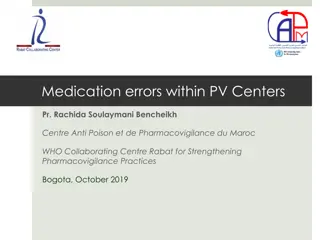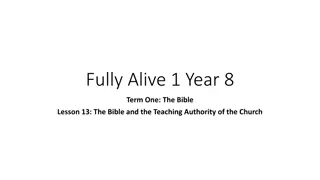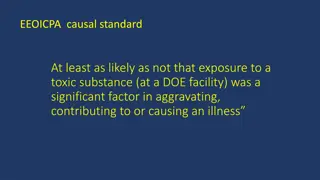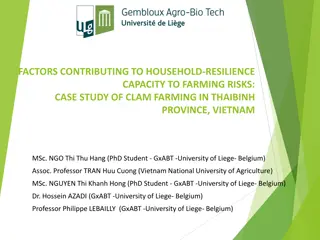
Contributing Factors in the IPC Analytical Framework
Explore the elements of contributing factors in the IPC Analytical Framework, how to interpret them within context, and their role in classification outcomes. Examples illustrate the importance of considering contributing factors in assessing food security and natural disasters.
Download Presentation

Please find below an Image/Link to download the presentation.
The content on the website is provided AS IS for your information and personal use only. It may not be sold, licensed, or shared on other websites without obtaining consent from the author. If you encounter any issues during the download, it is possible that the publisher has removed the file from their server.
You are allowed to download the files provided on this website for personal or commercial use, subject to the condition that they are used lawfully. All files are the property of their respective owners.
The content on the website is provided AS IS for your information and personal use only. It may not be sold, licensed, or shared on other websites without obtaining consent from the author.
E N D
Presentation Transcript
Contributing factors Elements of contributing factors are located on the left-hand side in the IPC Analytical Framework: Vulnerability, recourses and control Acute events of ongoing conditions Availability Access Household utilization Stability
Interpreting contributing factors Contributing factors always have to be interpreted within their context No global cut-offs exist, with a few exceptions: Access to water Some included in the IPC Chronic Food Insecurity Reference Table Cut-offs can be developed for indicators on contributing factors at local level (e.g. production, herd dynamics, rainfall) Predictive Livestock Early Warning System - Kenya
Interpreting contributing factors Contributing factors alone cannot be used to determine, or to override a classification Should be used with outcome evidence, and can support or question the classification/ outcomes Phase Contributing factors Outcomes classification
Example 1 Contributing factors can help to verify outcome evidence: In a semi-arid area of Sindh in Pakistan livestock is an important source of food and income. Food security assessment results showed a high share of households resulting to emergency coping strategies, and a closer look revealed that this was caused by lots of household reporting selling their last female livestock. However, when the analysts reviewed the data collected in the same survey on household livestock ownership and changes in livestock rates they noted that these showed no changes. They understood that most likely the households interviewed perceived the question as selling female animals , rather than as selling last female animals . This allowed the analysts to treat the share of households with emergency coping with caution.
Example 2 Interpreting contributing factors: Flooding is a common shocks in many countries and can have destructive impacts in terms of loss of houses, livestock, crops, other assets and also human lives. However, flooding is typically a rather localised shock with severe impacts limited to a relatively small number of households. In addition, flooding can offer opportunities for off-season cropping. Households by the Shabelle and Juba rivers in Somalia regularly take advantage of flooding for irrigation and to grow off-season crops in flooded areas that retain moisture after floods have receded.






















